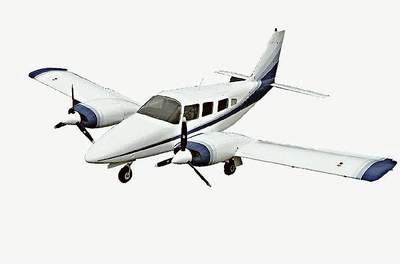Wed, Dec 02, 2020
AD 2020-24-09 Requires Inspecting The Rudder Flight Control Cables And The EPS Wiring For Damage
The FAA is adopting a new airworthiness directive (AD) for certain Piper Aircraft, Inc., Model PA-34-220T airplanes.

This AD was prompted by a report of damage to the rudder flight control cables and the emergency power supply (EPS) system wiring due to inadequate clearance from the EPS wiring harness. This AD requires inspecting the rudder flight control cables and the EPS wiring for damage, replacing damaged cables and wires if necessary, and re-routing the EPS wiring harness to ensure proper clearance between the EPS and the rudder flight control cables. The FAA is issuing this AD to address the unsafe condition on these products. This AD is effective January 5, 2021.
Supplementary Information: The FAA issued a notice of proposed rulemaking (NPRM) to amend 14 CFR part 39 by adding an AD that would apply to certain serial-numbered Piper Aircraft, Inc., Model PA-34-220T airplanes. The NPRM published in the Federal Register on July 28, 2020 (85 FR 45353). The NPRM was prompted by a report of damage to the rudder flight control cables and the EPS system wiring due to inadequate clearance from the EPS wiring harness. Use of the rudder flight control cable and the motion of the cable rubbing against the EPS wiring can wear through the rudder flight control cable insulation and cause an electrical path to ground.

The flow of the electrical current can burn (arc) through the rudder flight control cable strands, eventually severing the rudder flight control cable. In the NPRM, the FAA proposed to require inspecting the rudder flight control cables and the EPS wiring for damage, replacing damaged cables and wires if necessary, and re-routing the EPS wiring harness to ensure proper clearance between the EPS and the rudder flight control cables. This condition, if not addressed, could result in electrical arcing between the EPS and the rudder flight control cables with consequent failure of the rudder flight control system. This failure could cause loss of yaw control and lead to loss of control of the airplane during an engine out condition/operation. The FAA is issuing this AD to address the unsafe condition on these products.
More News
He Attempted To Restart The Engine Three Times. On The Third Restart Attempt, He Noticed That Flames Were Coming Out From The Right Wing Near The Fuel Cap Analysis: The pilot repor>[...]
Make Sure You NEVER Miss A New Story From Aero-News Network Do you ever feel like you never see posts from a certain person or page on Facebook or Instagram? Here’s how you c>[...]
From 2009 (YouTube Edition): Leading Air Show Performers Give Their Best Advice for Newcomers On December 6th through December 9th, the Paris Las Vegas Hotel hosted over 1,500 air >[...]
Aero Linx: NASA ASRS ASRS captures confidential reports, analyzes the resulting aviation safety data, and disseminates vital information to the aviation community. The ASRS is an i>[...]
“For our inaugural Pylon Racing Seminar in Roswell, we were thrilled to certify 60 pilots across our six closed-course pylon race classes. Not only did this year’s PRS >[...]
 NTSB Final Report: Rutan Long-EZ
NTSB Final Report: Rutan Long-EZ ANN FAQ: Turn On Post Notifications
ANN FAQ: Turn On Post Notifications Classic Aero-TV: ICAS Perspectives - Advice for New Air Show Performers
Classic Aero-TV: ICAS Perspectives - Advice for New Air Show Performers ANN's Daily Aero-Linx (06.28.25)
ANN's Daily Aero-Linx (06.28.25) Aero-News: Quote of the Day (06.28.25)
Aero-News: Quote of the Day (06.28.25)




